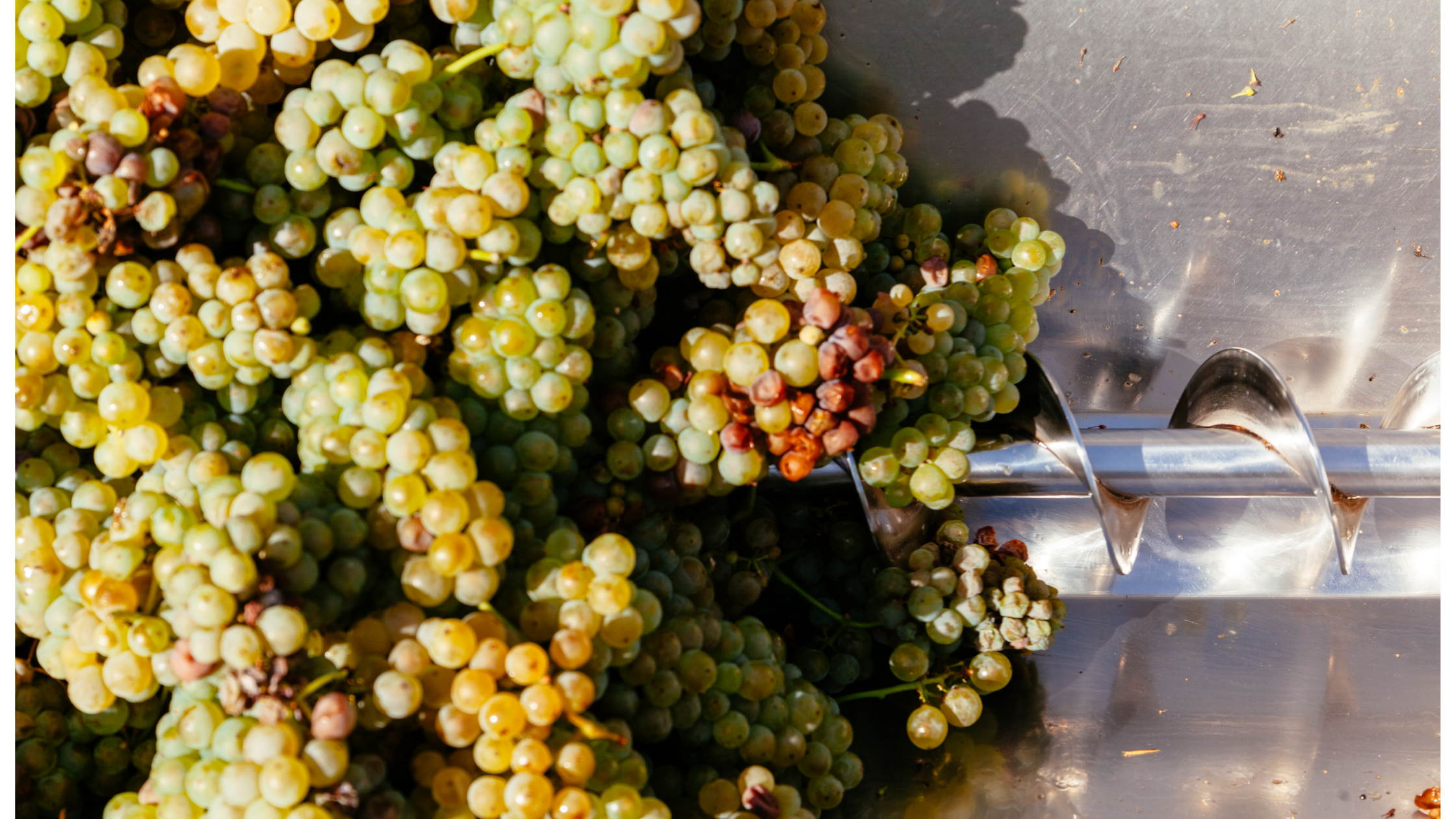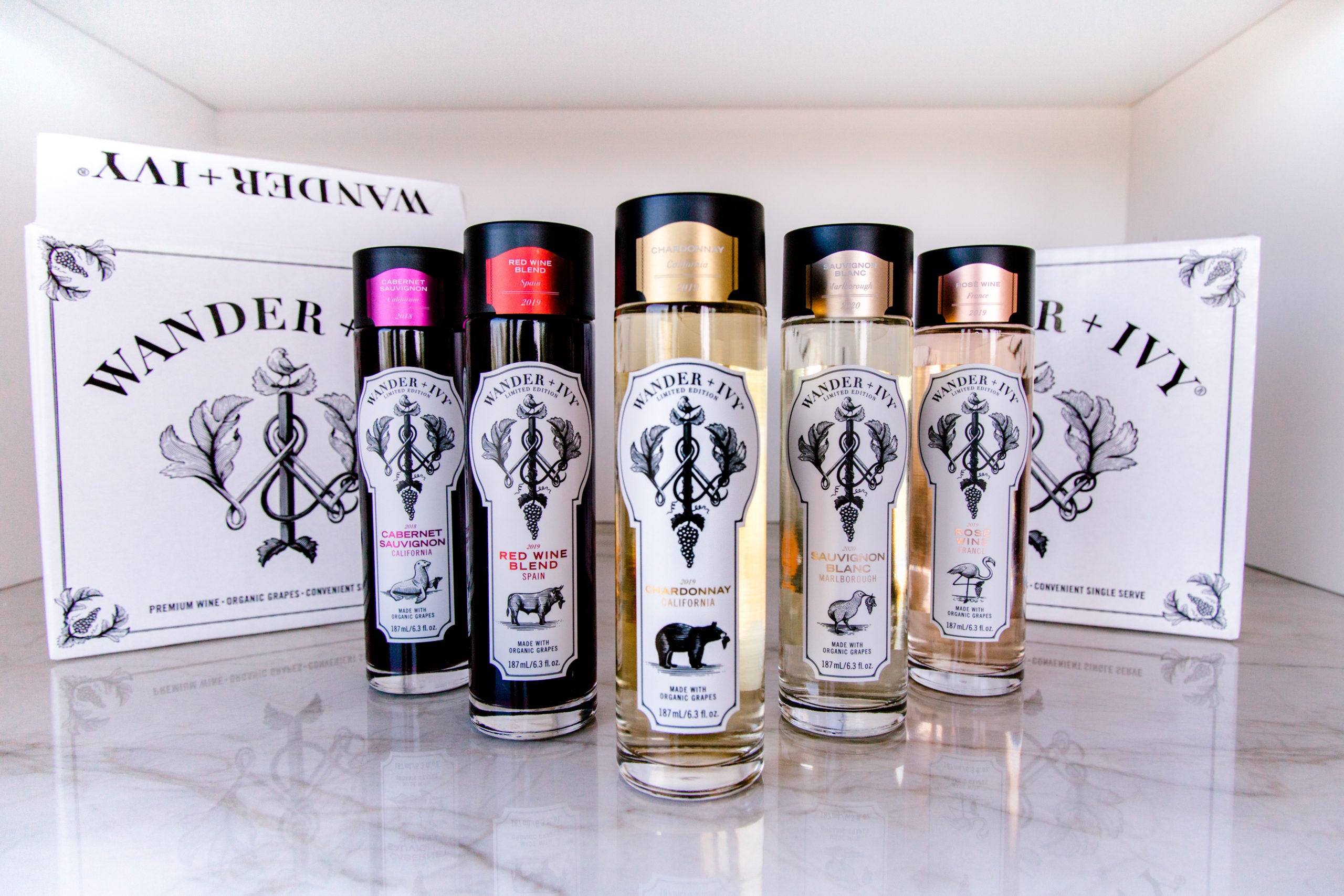Article: A Complete Guide to the Wine Production Process

A Complete Guide to the Wine Production Process
We’re super excited to share the wine production process steps and preliminary stages of the process. Join us as we cover how wines are made from the initial steps of sorting, crushing, and pressing to the final stages of the process of winemaking, fermentation, and aging. Let’s chat about how wine is made!
- Basic Winemaking Terms to Know
- Stage 1: Sorting, Crushing, and Pressing
- Stage 2: Tanks and Fermentation
- Stage 3: Aging Wine
Basic Winemaking Terms to Know

Before jumping right into the intricate process of how wine is made, it’s helpful to know the following basic terms that will enrich your understanding:
- Winemaking: Winemaking is the production of wine, starting with the selection of the fruit, its fermentation into alcohol, and the bottling of the finished liquid.
- Sorting: Removing damaged / unsuitable fruit or other materials.
- DeStemming: Removing grape stems.
- Crushing: Breaking the grape skin to release the juice, the juice is collected and may be fermented separately.
- Pressing: Separates the liquid from the solid constituents. This happens at different times in the winemaking process for reds and whites.
- Must: Crushed fruit and skin.
- Tanks: Vessel where fermentation takes place.
- Fermentation: The process by which grape transforms into wine. During fermentation, yeast converts grape sugars into alcohol.
- Cap: The mass of solid matter that rises to the surface during fermentation.
- Pump Over: Process by which fermenting juice is circulated, or pumped, over the cap.
- Punch Down: Process by which a device pushes the cap down, breaks it up, and submerges it again.
- Lees: The dead leftover yeast cells from the fermentation process.
- Glycol Jacket: Temperature regulation technology that archives cooling from the exterior of a tank.
- Ullage: Commonly refers to the headspace of air between wine and the top of the container holding the wine.
- Topping: The process of refilling any wine that has evaporated.
Stage 1 in the Process of Making Wine: Sorting, Crushing, and Pressing
The first stage in the process of winemaking involves sorting, crushing, and pressing grapes. It sounds simple, but here’s what each step involves:
Sorting

Sorting the grapes is a vital part of the winemaking process! When the grapes arrive at the winery, oftentimes they are set on a table and manually sorted. The staff works to eliminate and remove damaged or unsuitable grapes and other materials that are not grapes.
Destemming can be the next part of this process, it’s an optional step and not done for every wine. It’s done using machinery that crushes the grape at the same time.
Crushing
The purpose of the crushing step in the process of making wine is to break the skins of the berries so the juice can run free. This can be a manual or machine-induced process and must be done carefully. The manual process is done by human feet, picture the classic photo of someone in a barrel stepping on grapes, and the mechanical process is done via crushing/de-stemming machines.
Pressing
This super important step in the wine production process takes place before fermentation. Pressing separates the liquids from the solids. Pressing is done in a large machine and is achieved through compressing. It sounds similar to crushing right? It’s not. Pressing is the actual compression of the must (crushed fruit and skins) while crushing is when the skin is pierced and pressure is applied. Pressing must be done carefully to ensure that the seeds do not burst, which can result in unwanted colors and a bitter taste (caused by tannins) in the wine itself.
Most white wines do not go through pressing. If a winemaker chooses to press a white wine, it’ll be immediately after crushing so that the juice won’t have time to absorb the tannins, color, and phenolics from the skins.
Most red wines are pressed! Since winemakers want the tannins, color, and phenolics to leak into the red wine must, pressing isn’t done until near the end of fermentation.
Stage 2 in the Process of Making Wine: Tanks and Fermentation
We’re on to the next stage in the process of making wine. We’ll talk about how wine is stored in tanks, including what the fermentation process looks like in general and for specific wine types.
Tanks

At this point in the winemaking process, winemakers have several options to choose from to decide which type of tank they would like to ferment their wine in. The tank is an important step in the winemaking process, it is where fermentation takes place.
Stainless steel tanks are an option many winemakers choose to use. They are among the most common of tanks, and offer many benefits including temperature regulation and easy cleaning! Tanks can be placed indoors or outside depending on the climate and region of the winery.
In most tanks, there is a layer of insulated foam to help protect against heat. Underneath the foam or outer layer is an additional double wall of insulation that is refrigerated, which helps regulate the temperature during the wine production process steps. Tanks placed outdoors often utilize a glycol jacket—a temperature regulation technology that achieves cooling from the exterior.
While stainless steel tanks are the most popular, winemakers also use wood tanks, concrete tanks, and amphorae to add unique traits to their wines.
Fermentation
Fermentation is the next step in the winemaking process in which grape must (crushed grapes and skin) transforms into wine. During this process, yeast converts grape sugars into alcohol. The fermentation process for white and red wines varies.
White Wine Fermentation
- White wine fermentation usually happens directly after pressing.
- The juice from the pressing process goes into the tank to settle, is chilled, and the solids start to settle in the bottom.
- Fermentation begins by adding yeast and is controlled through refrigeration - this process can take about 2-4 weeks.
- Once fermentation is complete, a winemaker may choose to stir the lees, which are little dead yeast bits that are at the bottom of the tank. The lees float up in the wine and add flavor and texture to the wine.
Red Wine Fermentation
- Red wine fermentation happens with grape skins and juice combined usually before pressing.
- The grape skin contact in red wine production gives the color, flavor, and texture that is integrated into the juice.
- Fermentation begins by adding yeast and is controlled through refrigeration - this process can take about 1-2 weeks.
- After the yeast is added, the cap starts to form atop the tank, these need to be blended back into the tank which happens by way of pumping over or punching down.
- A pump over circulates the fermenting juice over the layer at the top of the tank. A punch down is when a device pushes the top layer down, breaks it up and submerges it again.
- After fermentation, the converted liquid is transferred into a wine press, to separate the skins and seeds from the wine.
As mentioned, the fermentation process varies for reds and whites. This process can also be different depending on the winemaker and their specific preferences. The wonderful thing about winemaking—no two winemakers or wineries are the same, which is why we get many delicious and unique varieties of wine such as a crisp Sauvignon Blanc, or aroma-filled Red Wine Blend!
Stage 3 in the Process of Making Wine: Aging Wine
We’re on to the final step in the process of winemaking - the aging process!
The Élevage
Time for the big finale! The élevage! This French term, which translates to “raising” or “upbringing”, is used to describe what happens to wine between fermentation and bottling. The élevage can last months to years, and enables wines’ flavors to mature and integrate.
Types of Barrels
The aging of wine takes place in oak barrels or steel barrels. The decision on what type of barrel to age in is based on how the winemaker wants the wine to taste. The different barrel types can impact flavor.

Oak Barrels
Oak barrels are made from staves, long pieces of oak wood that are fitted together with metal hoops. Once fitted they are toasted over a fire to either a light, medium, or dark toast level. Neutral oak, American oak, and French oak are the most common types of oak barrels.
Aging in an American oak barrel or French oak barrel impacts the flavor profile of the wine. Aging in a neutral oak barrel has little to no effect on the flavor profile. For example, Wander + Ivy Red Wine Blend is aged for 4 months in 225-liter barrels of Med+ toast.
American oak is porous with pronounced aromas of vanilla, coconut, cream soda, and even dill that contribute to the flavor of the wine. French oak, a significant part of the process of winemaking, is highly regarded for its solid grain and can produce wines with savory spices, caramel, roasted coffee, and dark chocolate aromas that also impact the flavor of the wine.
Steel Barrels
Aging in stainless steel does not impact the flavor profile of the wine at all. Reds and whites aged in stainless steel are straightforward and juicy, with no oak flavor additions.
Keeping Wine Healthy While in Barrels
As part of the process of winemaking, all barrels are typically stored in a cellar and stacked on cradles. As they continue to age, evaporation within the barrel occurs, causing the wine to reduce. The winemaker must go in every month and “top” the wine to replenish the barrel with wine that has since evaporated. This is referred to as monthly topping - to replenish the amount of ullage that goes down in the barrel itself.
Wineries will have different topping materials that are reserved for this process, oftentimes using the exact wine that is pulled from other barrels in an airtight container.
Once aged fully within the barrel, the wine is off to bottling and then to distribution to be enjoyed by the people!
Experience Affordable Premium Wine
There you have it – the process of making wine, from sorting and crushing to fermentation and aging! If you’re suddenly craving a crisp wine like we are, our organic premium single-serve wines offer the perfect solution for indulging in fine wine without the worry of wasting an entire bottle. Explore our range of Wander + Ivy wines including Cabernet Sauvignon, Sauvignon Blanc, Red Wine Blend, Chardonnay, Rosé, Pinot Noir, and our latest addition, the Bubbles collection. Cheers to convenience and quality!
Shop all of our single serve wines made with organic grapes on our online wine shop.

